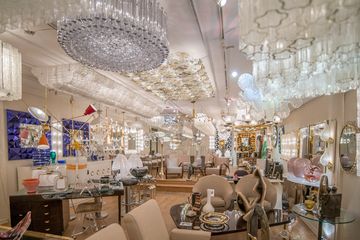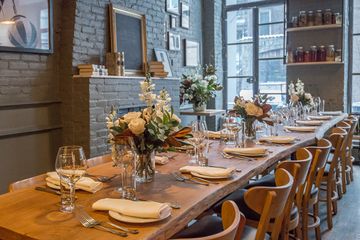The moment a diner sits down at Il Mulino, a cavern of scrumptious parmesan cheese is chipped onto their plates; an archaeological dig of bruschetta is brought piled high on a long platter with tongs, followed by garlic bread and other fine antipasti. Everything is delivered to the table, complementary, by some of the best trained staff in the city. One could fill up on this alone, without ever having to look at the menu. However, that would be a tremendous mistake. The ambience of this uptown location is very different from its original downtown spot. When walking on the side streets of Manhattan, I am always intrigued by the stories that I hear, and I was eager to learn about what inspired the latest addition to Il Mulino. Two Italian brothers, Fernando and Gino Masci, had both been trained to cook on board a passenger ship, and when they arrived in New York, they could not find what they believed to be authentic Abruzzo cuisine. In 1981, they decided to open their own restaurant in Greenwich Village, which was, at the time, a frightening locale. There were only eighteen tables in their intimate space, and there continues to be the same number today. Within no time, word spread to Wall Street and business people were coming "uptown" for what was considered some of the best Italian food and service anywhere. In 2012, the Mascis brothers decided it was time to sell the restaurant that had afforded them an international reputation. Although they never attempted to duplicate Il Mulino, the new management had a vision and began opening new locations, not only in New York, but in other parts of the US and abroad. As I spoke with the two extraordinary designers of the restaurant, Lee Katzoff and Rozhia Tabnak of Two Blocks East, I learned that they were hoping to appeal to an uptown crowd with the black and white photos of celebrities lining the white walls, and a burst of color coming from a dazzling bouquet of forsythia. This restaurant has a sleek, more contemporary look than the traditional decor of the Greenwich Village locale. "The food and the service must always be the stars of the overall aesthetic, " Lee explained. Therefore, they had a room constructed that complements, but does not pull the focus away from, the cuisine. The designers are also interested in capturing the spirit of the neighborhood, which is why Il Mulino Uptown has such a minimalist, modern vibe compared to the original. Every single visual detail of the restaurant has been carefully thought out by these two innovative women - from the uniforms of the waiters, to the traffic patterns from the kitchen. "It's highly emotional for us, " Lee says. Their job is to generate memories, she continued, "Every piece of the puzzle must fit into place to create an environment that people will remember for years to come. "






